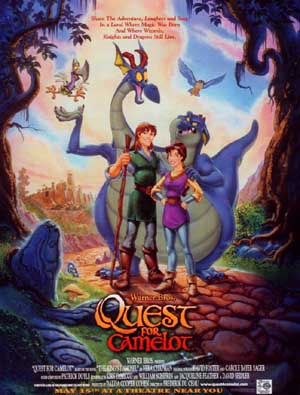Disney’s 1998 animated feature is based on the legend of Mulan, a Chinese girl who helps the Chinese army defeat the Mongols. After the Mongols invade, led by Shan-Yu (voice of Miguel Ferrar) every family is called upon to send one man to the army. Although Mulan’s father, Fa Zhou (voice of Soon-Tek Oh) must use a crutch to walk, he is willing to fight for the honor of his family. Mulan (voice of Ming-Na Wen) disguises herself as a man so that her father will not have to risk his life. The ghosts of her ancestors order a powerful guardian dragon to protect her and bring her home. Instead a tiny disgraced dragon named Mushu (voice of Eddie Murphy) joins her in the hope that he can help her achieve a triumph that will bring honor to both of them.
Mulan finds pretending to be a man and meeting the standards of Shang, her tough captain (voice of B.D. Wong) tougher challenges than she imagined. But her determination earns her the respect of the others, and in the midst of battle her quick thinking and courage save the day — instead of shooting her hopelessly outnumbered battalion’s last cannon at the enemy, she shoots at a snow-covered mountain, causing an avalanche that blankets them with snow. She then saves Shang from the avalanche.
Nevertheless, when her true gender is revealed, she is left behind. Instead of going home, Mulan and Mushu travel to warn the emperor that Shan-Yu is still alive, and again she saves the day when the Mongols attack.
This is one of Disney’s best, with gorgeous animation inspired by Chinese paintings, a hilarious performance by Eddie Murphy as Mushu, and a witty, intelligent script that transcends the usual formulas. In one nice twist, the macho soldiers who are certain that no “girl worth fighting for” would have a mind of her own end up having to dress as women to defeat the Mongols. And Captain Shang learns from the wise emperor that “the flower that blooms in adversity is the most rare and beautiful of all.”
Families will have much to talk about, including the notion of honor, the traditional Chinese view of the ancestors, and the importance of freedom from stereotypes. Be sure to have kids check out the web site, which has an online coloring book and some delightful old puzzles. Note: as with most Disney movies, there are some scary parts that may be overwhelming for small children.
Family connections: Adults with sharp ears may recognize Donny Osmond singing Shang’s songs and June Foray (of “Rocky and Bullwinkle”) as Mulan’s outspoken grandmother. Listen very carefully when the grandmother sings, though — it’s none other than Marni Nixon, who provided the bell-like singing voice for Natalie Wood in “West Side Story,” Deborah Kerr in “The King and I,” and Audrey Hepburn in “My Fair Lady.”

